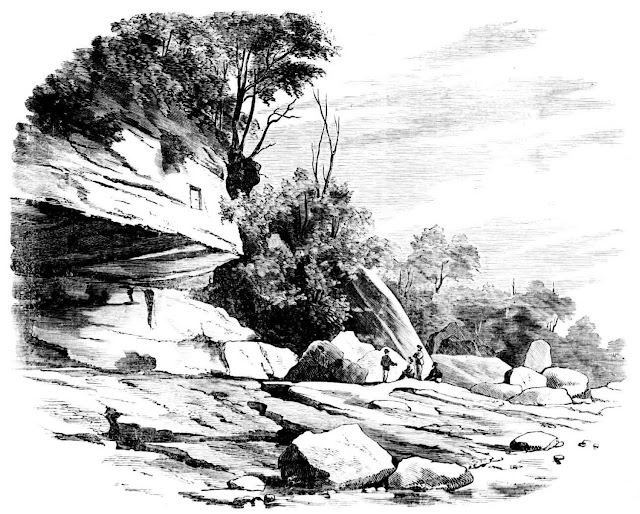The Landing Place of Captain Cook at Botany Bay
as Depicted in 1862
 |
| The Landing Place of Captain Cook at Botany Bay |
Reader Discretion: The following article contains certain descriptions that may be culturally sensitive and may be considered inappropriate today, but may have reflected the author's attitude or that of the period in which they were written.
The following appeared in the Illustrated Sydney News 16 June 1862:
LANDING PLACE OF CAPTAIN COOK AT BOTANY.
SOME generations hence the spot where the discoverer of Australia first set foot on its soil may become an object of as much historic interest to our descendants as the landing place of the "Pilgrim Fathers" has become to Americans. Strange to say, at present it is, comparatively speaking, terra incognito even to the inhabitants of Sydney, the great majority of whom have never visited the spot; and the dreary desolation around Botany Bay contrasts strongly with the busy hum of human industry which surrounds Port Jackson. How little could Cook have foreseen, when landing on that barren rock, the mighty results which were destined to follow; that the naked savages, who then for the first time looked on the face of a white man, were soon to become a thing of the past; that towns and cities would spring up as if by magic, and thousands of his fellow-countrymen seek these shores to found a new empire. Some twelve months ago we suddenly became aware of the debt of gratitude that New South Wales owed to the memory of Captain Cook, and forthwith meetings were held, committees were appointed, and programes issued of a grand commemoration festival, including a monster picnic, volunteer review, and an "excursion by water to Cook's landing place at Botany;" to adopt an old phrase, the scheme "went up like a rocket and down like a stick;" the effort was spasmodic, the intended fete never came off, and the debt is still unpaid.
Some difference of opinion is entertained as to the exact spot on which Cook landed. Some persons are of opinion that he landed at a place known as Sutherland's point; others, that the true position is a place called Curnell, on the southern shore of Botany. The weight of evidence is decidedly in favour of the latter, which answers to the description given of the landing place by Mr. Hawkesworth, who was journalist to the expedition.
Cook's journal states that close by the place where he landed, on the 28th of April, 1770, a well was dug in the sand by his sailors. This well is still in existence surrounded by a small stone wall erected by Governor Phillip in 1788.
Perhaps the strongest proof is that there are still living in the Colony three gentlemen, Messrs. Berry, Douglas, and Garland, who visited Botany some forty years ago in company with Sir Thomas Brisbane and other members of the Philosophical Society, and saw the spot pointed out by an aboriginal who was an eyewitness of Cook's disembarkation. Governor Brisbane afterwards caused a commemorative tablet to be affixed on the face of the rock shown in our illustration.
The tablet, though much corroded, still remains in its original position—
"This must be the place
Where our Columbus of the South did land."
Another object of historical interest is also to be found on the shores of Botany. We allude to the monument erected by the French Government to the memory of La Perouse, who visited Botany shortly after Cook.
Source: Landing Place of Captain Cook at Botany (1864, June 16). Illustrated Sydney News (NSW : 1853 - 1872), p. 11.







No comments